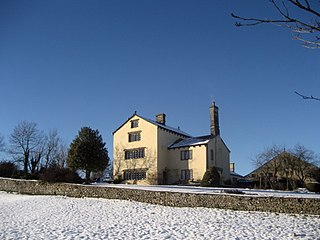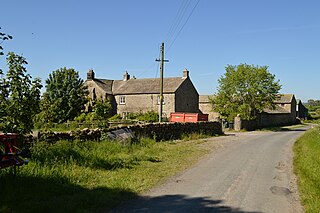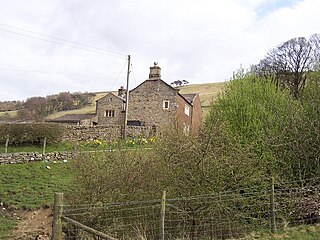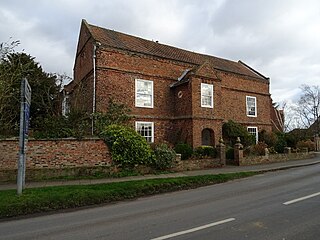
Onesacre Hall is a Grade II* Listed building situated in the rural outskirts of the City of Sheffield in South Yorkshire, England. The hall is located on Green Lane in the small hamlet of Onesacre in the suburb of Oughtibridge, 5 miles (8.5 km) north west of the city centre.
Lymm Hall is a moated country house in the village suburb of Lymm in Warrington, Cheshire, England. It is recorded in the National Heritage List for England as a designated Grade II* listed building.

Fulwood Hall, is an English country house situated on Harrison Lane in the suburb of Fulwood in Sheffield, England. It is a Grade II listed building. The hall stands in a lofty position on the north side of the Mayfield Valley at a height of 270 metres. The hall is referred to as Fullwood Hall on old maps and the gate to the hall uses this spelling with two Ls.
Paper Hall is a Grade II* listed building in Bradford, West Yorkshire, England, noted for being the oldest domestic building in the city centre and for housing the city's first spinning machines. Its then owner James Garnett is credited with bringing the industrial revolution to Bradford, which became one of the manufacturing centres of Britain in the 19th century.

The Golden Ball is a pub in the Bishophill area of central York, in England.

Bank Newton Hall is a historic building in Bank Newton, a village in North Yorkshire, in England.

Barden Old Hall is a historic building in Barden, a hamlet near Richmond, North Yorkshire, in England.

Smelter Farmhouse is a historic building in Bishopdale, North Yorkshire, a valley in England.

Cowling Hall is a historic building in Cowling, a village near Bedale in North Yorkshire, in England.

The Grange is a historic building in Cawood, a village in North Yorkshire, in England.

Turnham Hall is a historic building in Cliffe, a village near Selby in North Yorkshire, in England.

Trappes Hall is a historic building in Carleton-in-Craven, a village in North Yorkshire, in England.

Coulton Mill is a historic building in Coulton, North Yorkshire, a village in England.
Long Croft is a historic house in Cowling, a village in North Yorkshire, in England.

Croft Hall is a historic building in Croft-on-Tees, a village in North Yorkshire, in England.

Elslack Hall is a historic building in Elslack, a village in North Yorkshire, in England. Today it has been subdivided into a farm house and cottage.

The Old White Bear is a historic pub in Cross Hills, a village in North Yorkshire in England.

Malsis Hall is a historic building in Cross Hills, a village in North Yorkshire, in England.

Ayton Hall is a historic building in Great Ayton, a village in North Yorkshire, in England.

Low Whita Farm is a farm in Grinton, a village in North Yorkshire, in England.

















